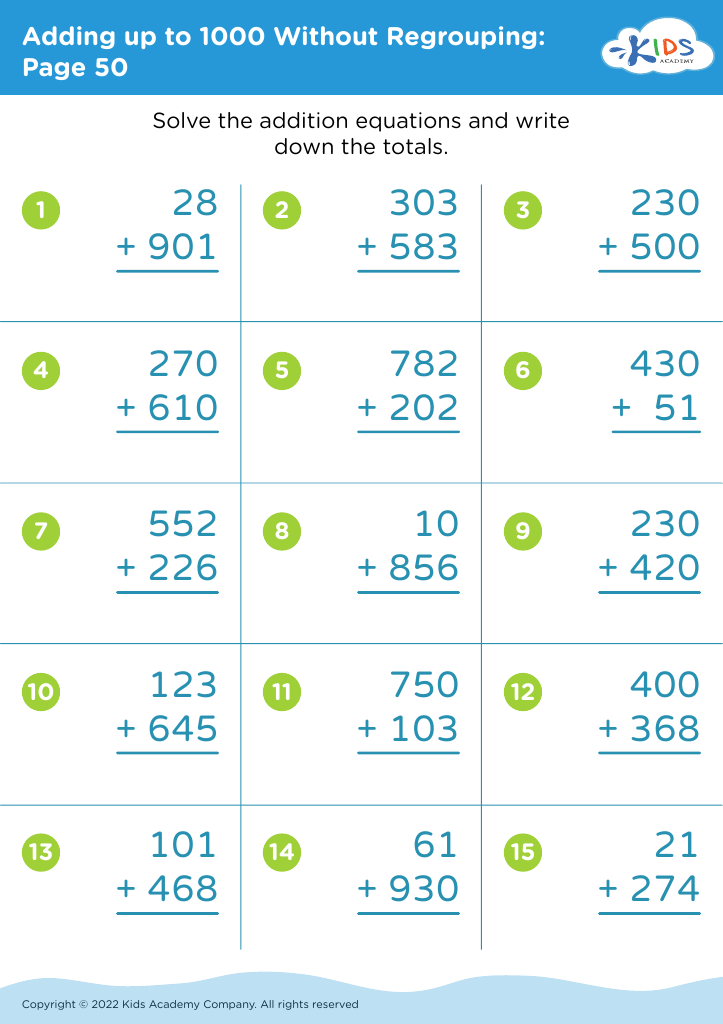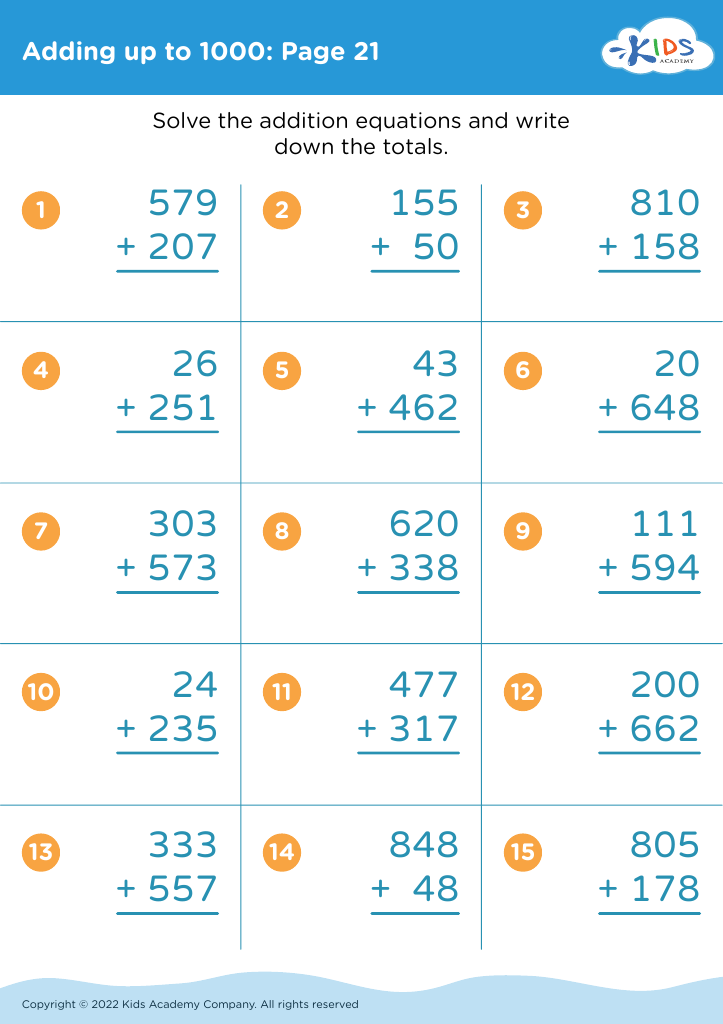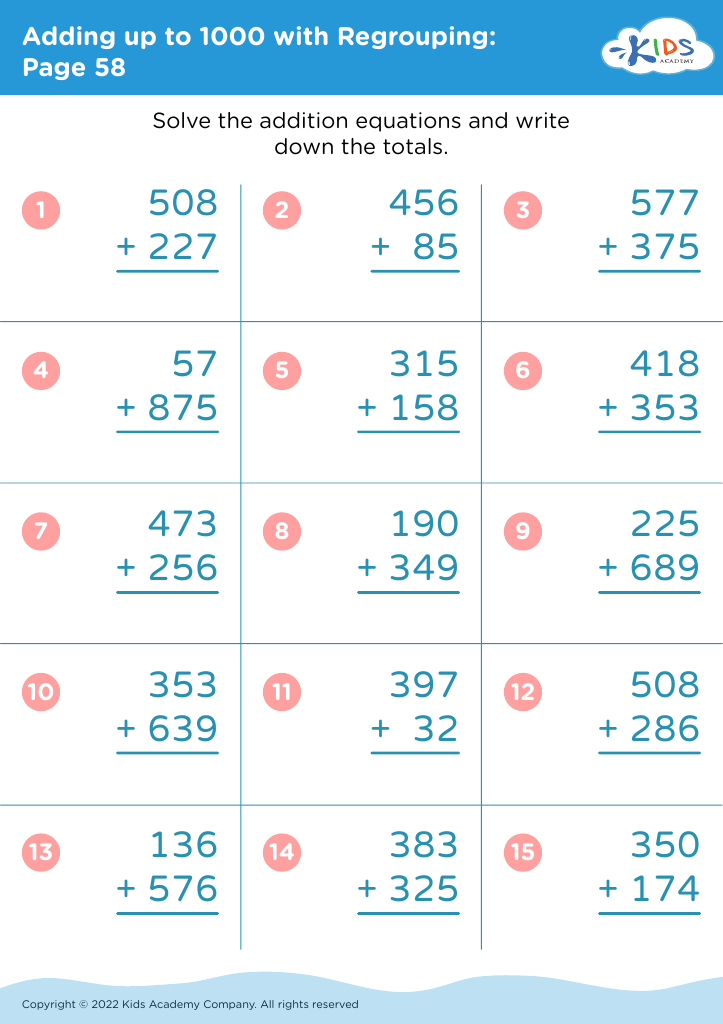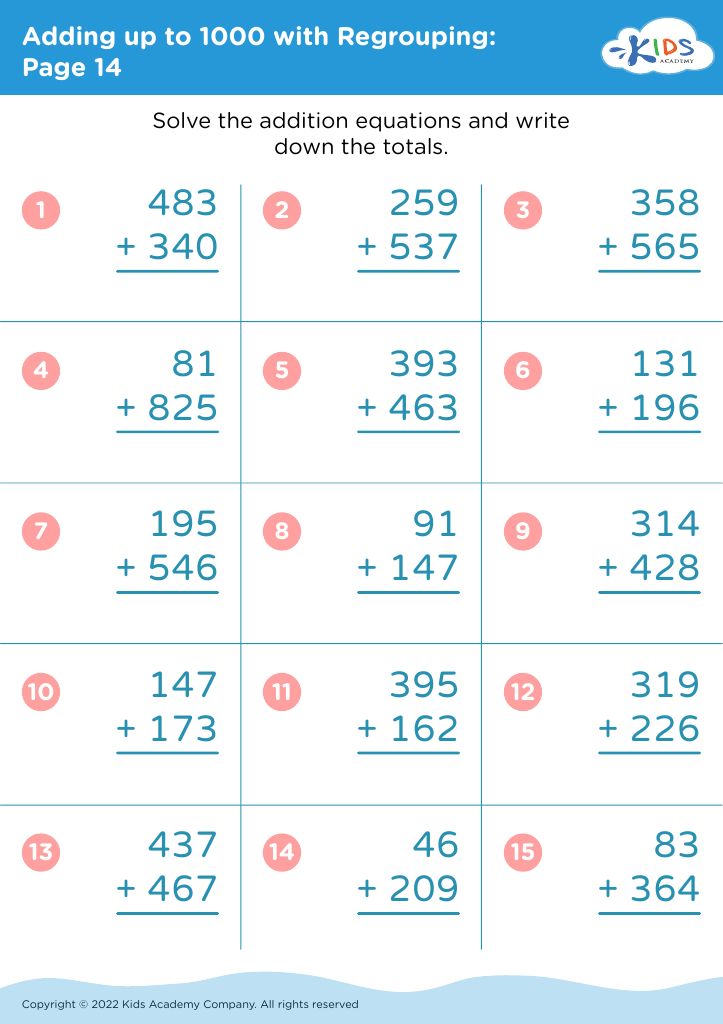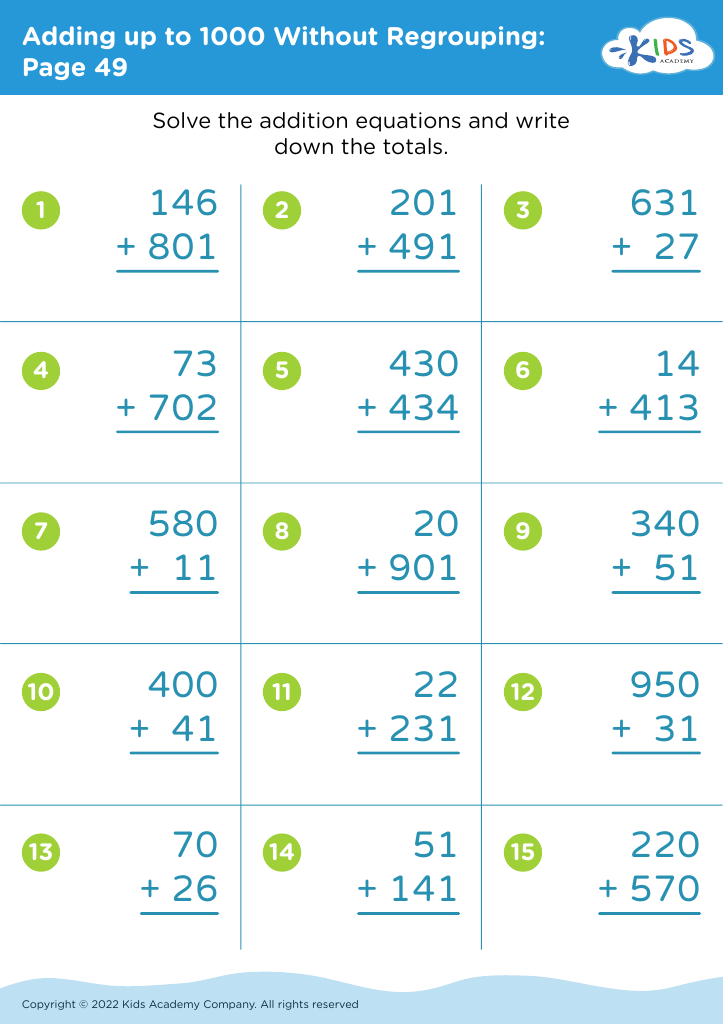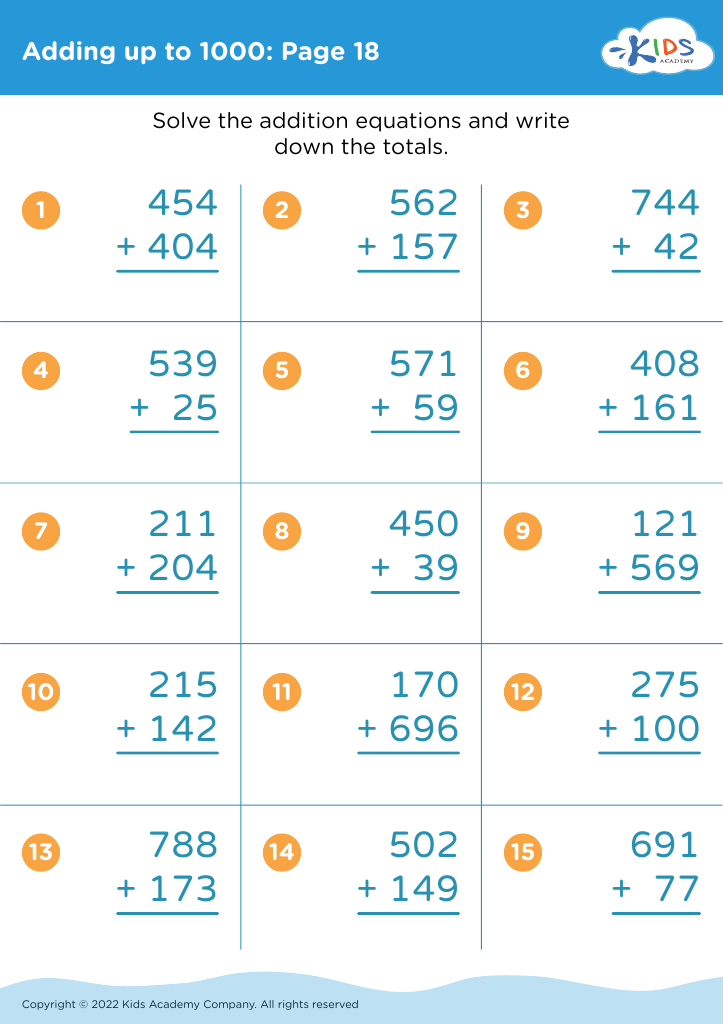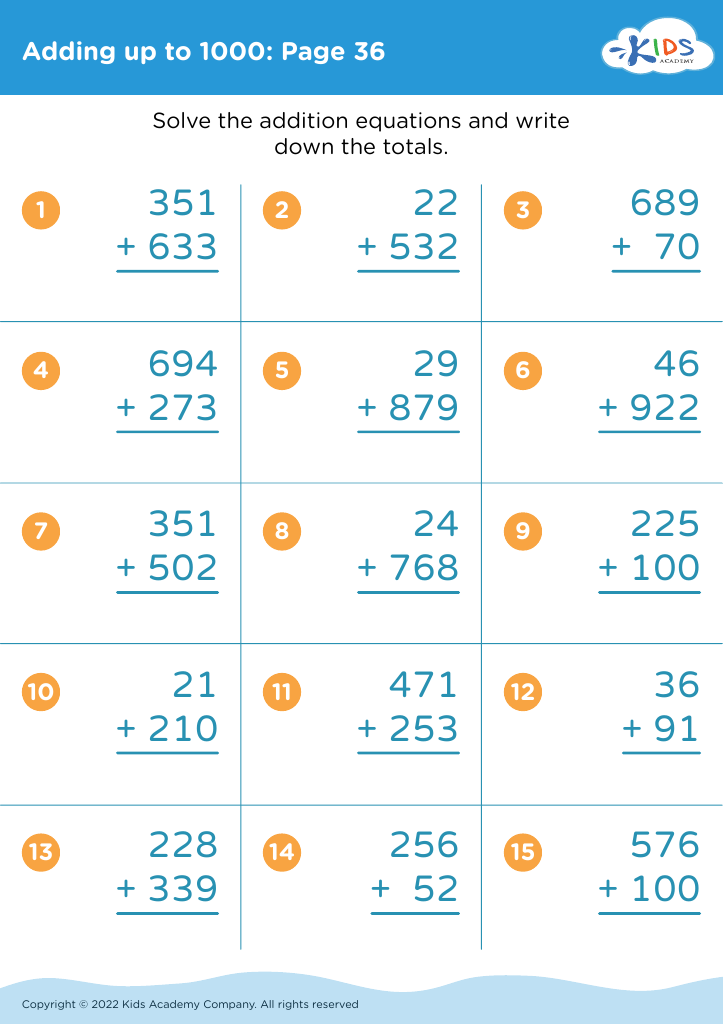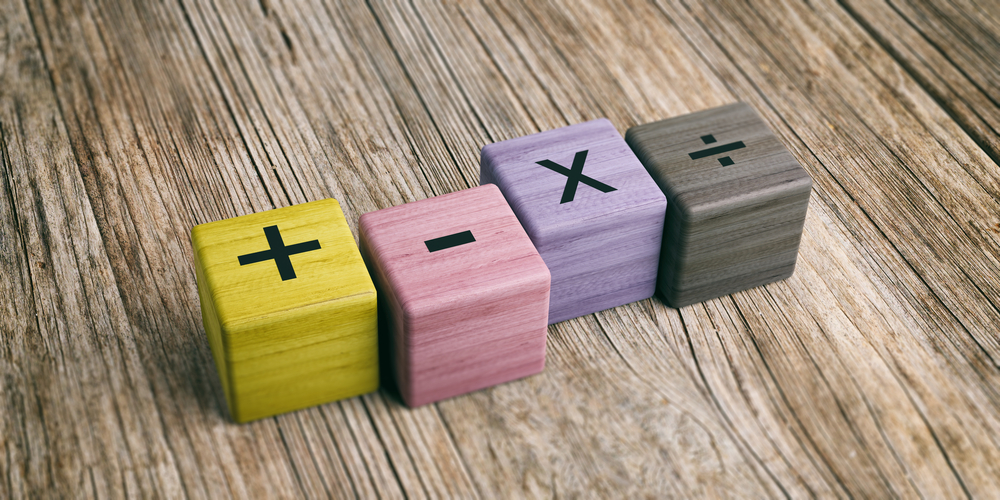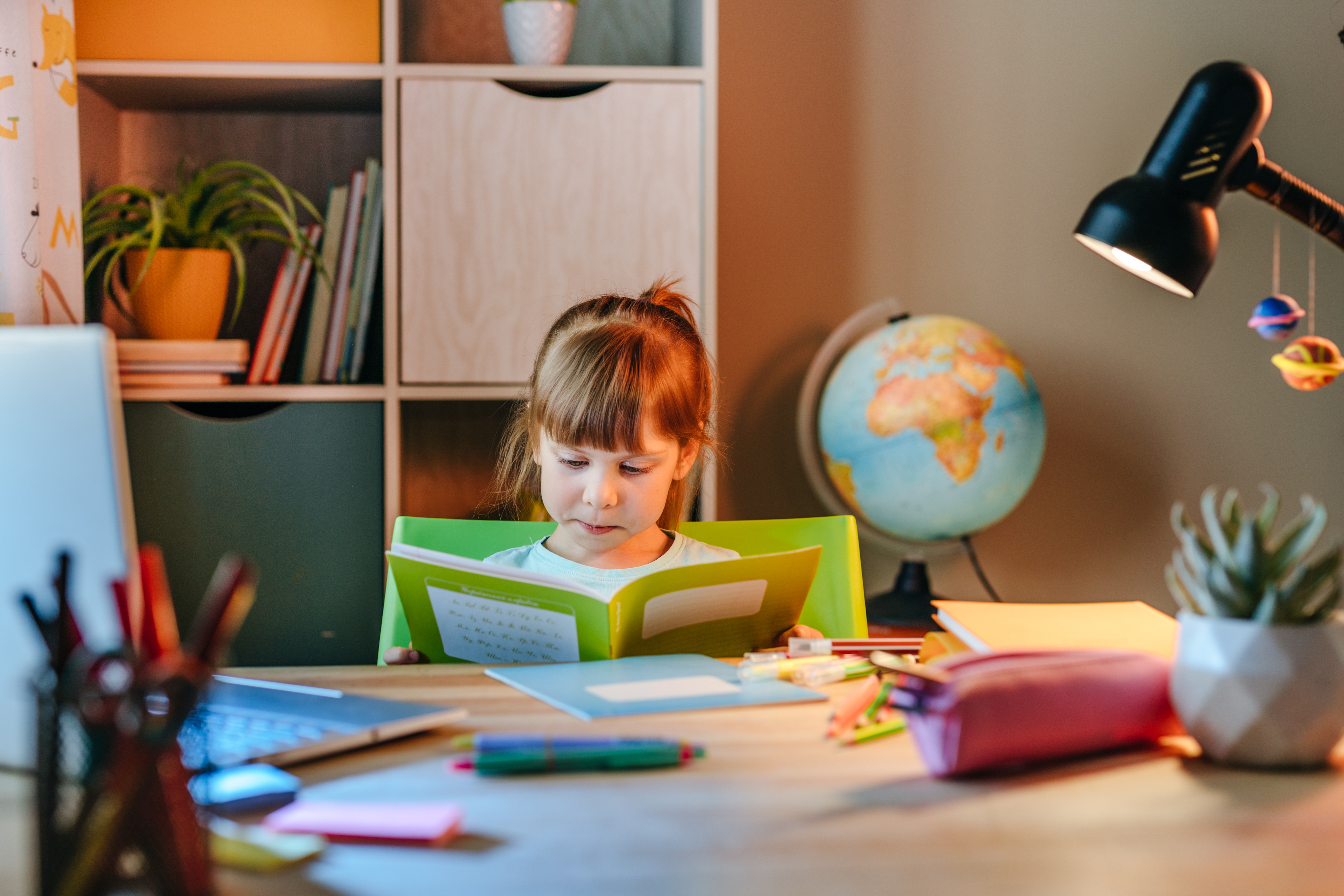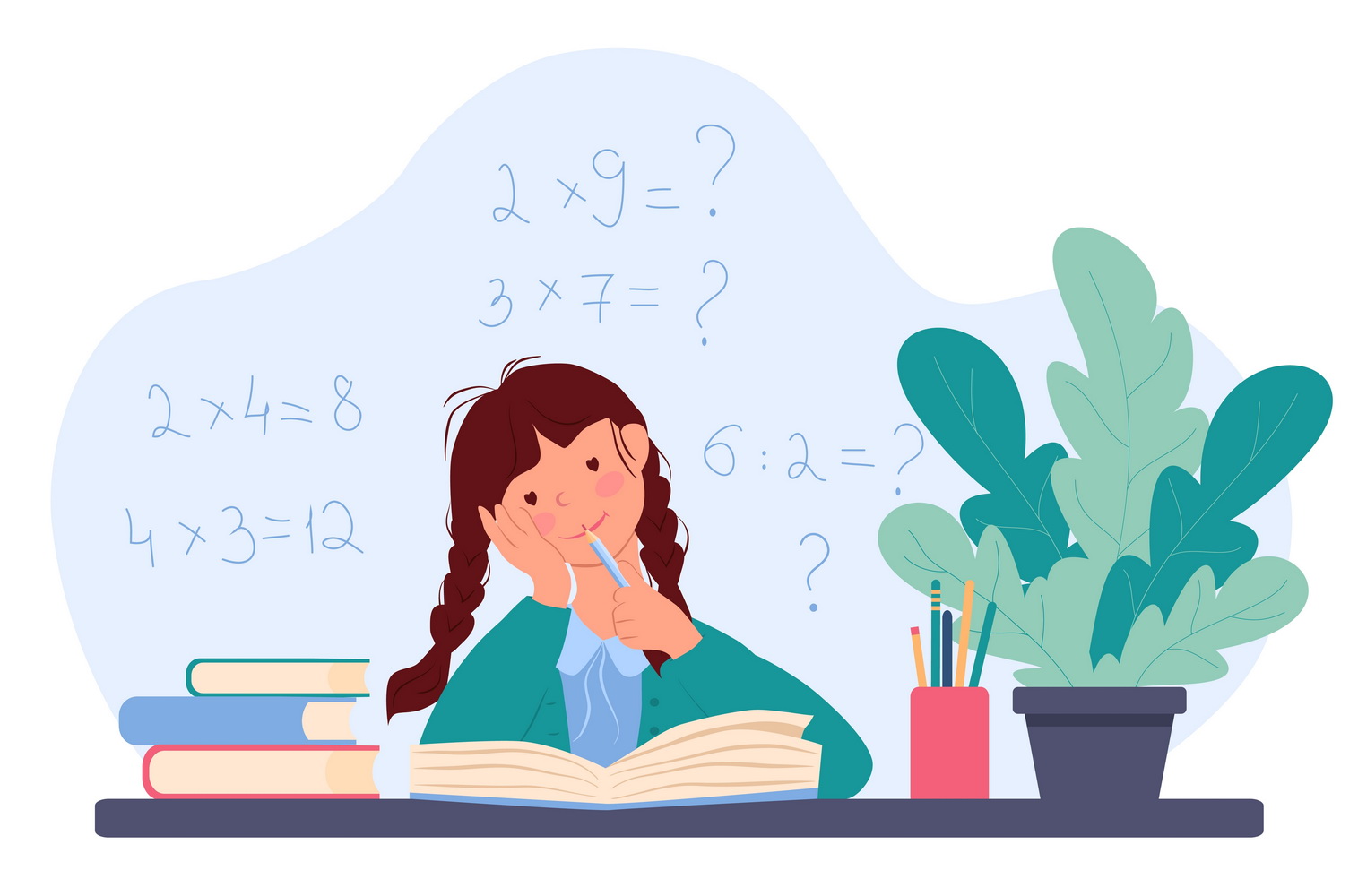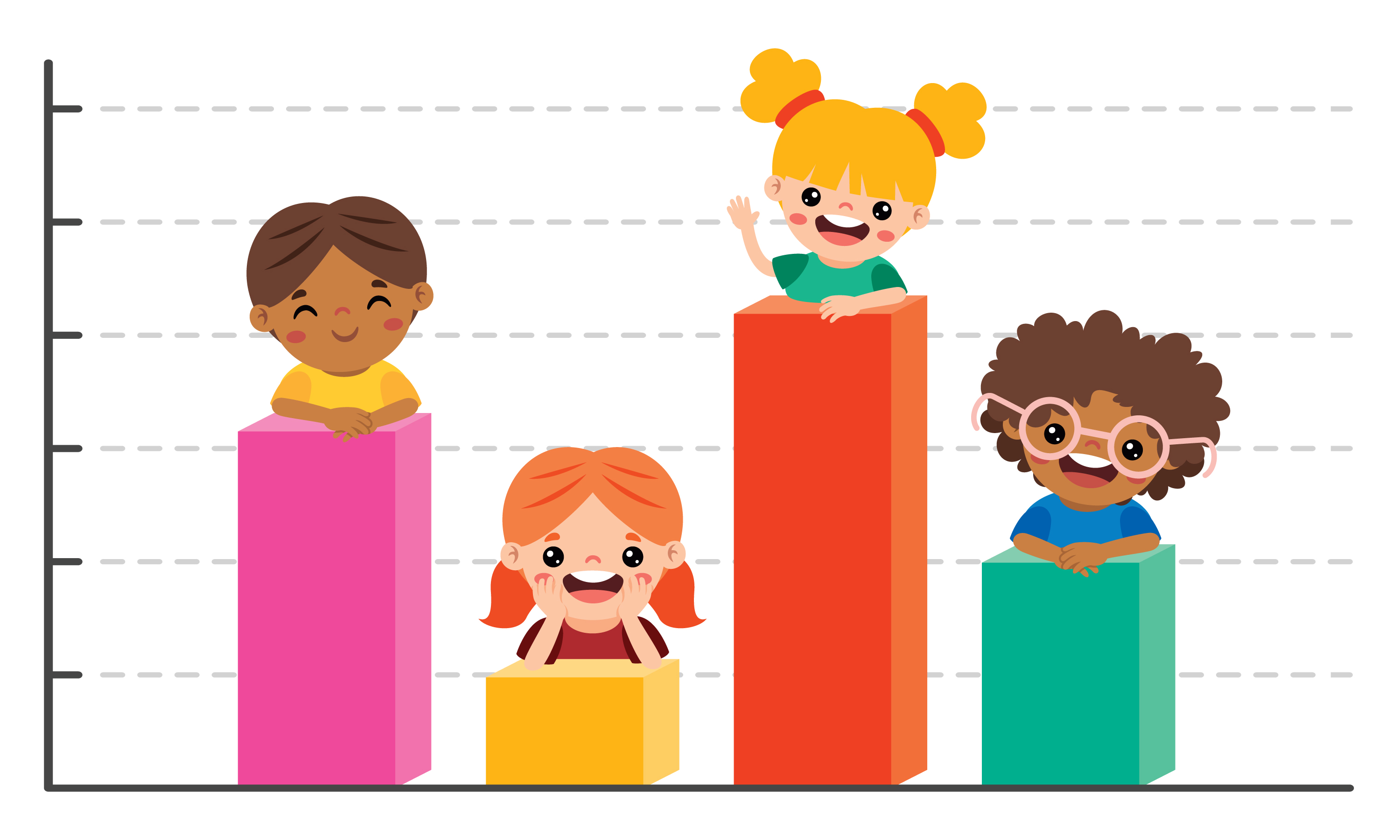Fine Motor Skills Grade 3 Addition Worksheets
13 filtered results
-
From - To
Boost your third grader's math abilities with our Fine Motor Skills Grade 3 Addition Worksheets. Specially designed to enhance both mathematical understanding and fine motor development, these printables provide engaging addition exercises tailored for young learners. The worksheets combine visually stimulating and educational content, ensuring that students grasp addition concepts while also practicing crucial hand-eye coordination and fine motor skills. Ideal for homeschooling, classroom use, or extra practice at home, our expertly crafted worksheets make learning addition both fun and effective. Help your child excel academically while developing key skills needed for success in and out of the classroom!
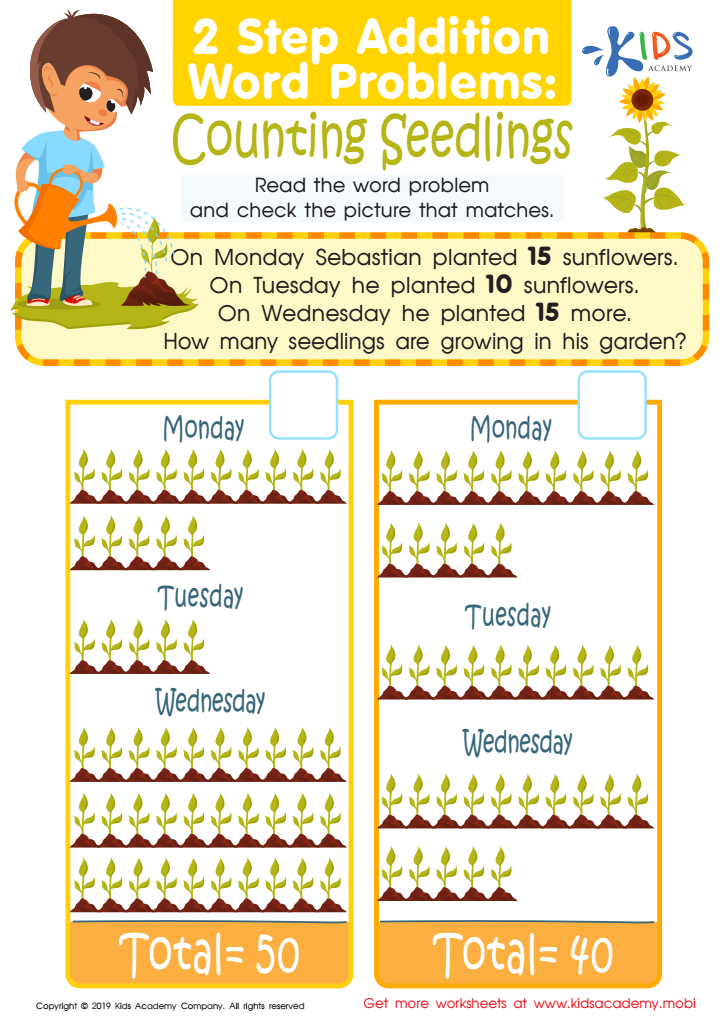

Counting Seedlings Worksheet
Fine motor skills are crucial in every child's development, and understanding their role in Grade 3 mathematics, specifically in addition, showcases their importance. Fine motor skills refer to the ability to make movements using the small muscles in our hands and wrists, allowing children to perform tasks such as writing numbers, manipulating objects, and using tools like pencils and erasers, which are essential in math.
For third graders, knowing addition facts is not just about memorizing numbers but being able to work with them effectively during math activities. Good fine motor skills support the child's ability to write numbers clearly and align them properly in columns, critical for solving addition problems accurately. This precision helps prevent errors and builds a strong foundation for more advanced math concepts later on.
Furthermore, the integration of fine motor skills in learning can boost a child's confidence and independence. As they become proficient in handling and organizing their work, their sense of achievement increases, motivating them to tackle more challenging tasks with enthusiasm. Thus, parents and teachers should prioritize activities that enhance fine motor skills, ensuring that children are not only academically capable but also equipped with the necessary physical proficiency to excel in their studies.
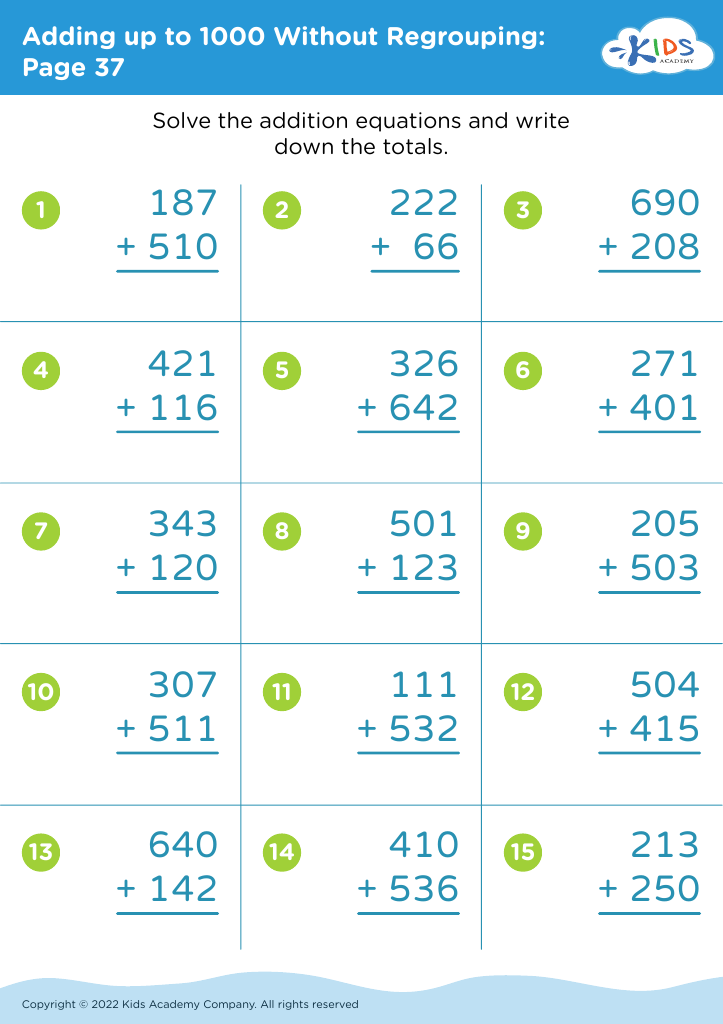

 Assign to My Students
Assign to My Students
